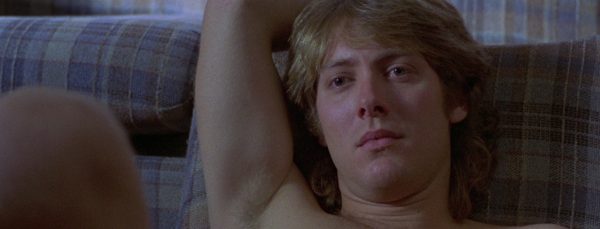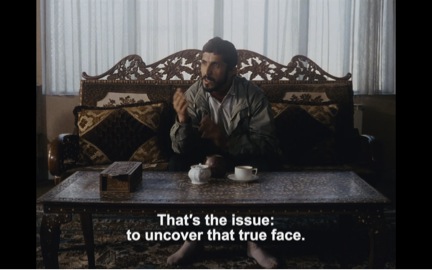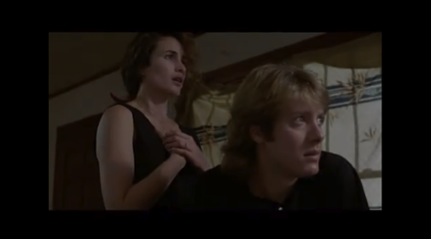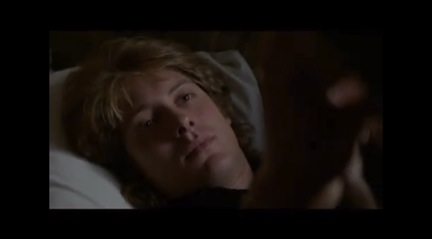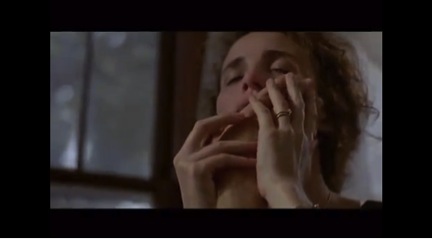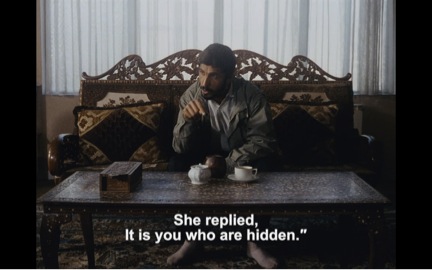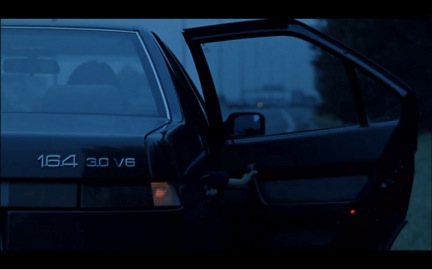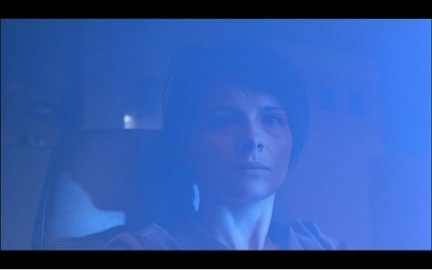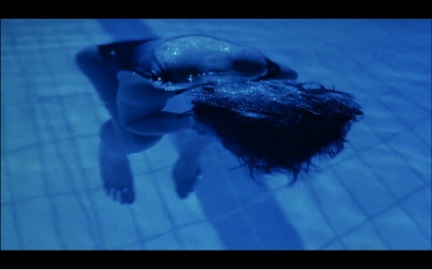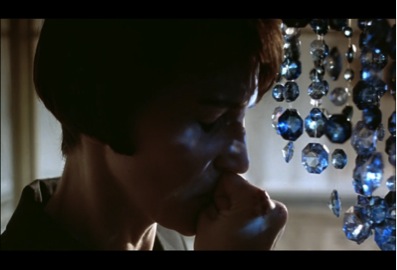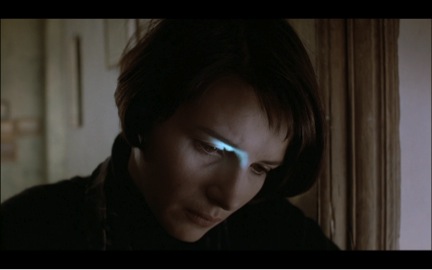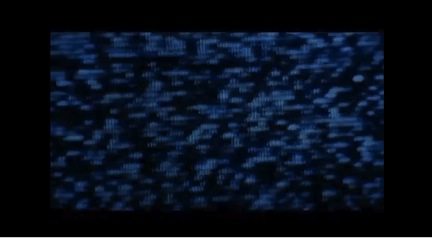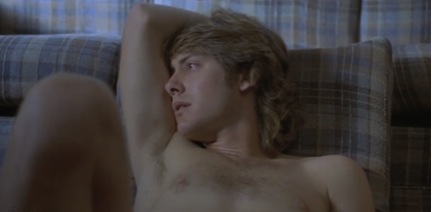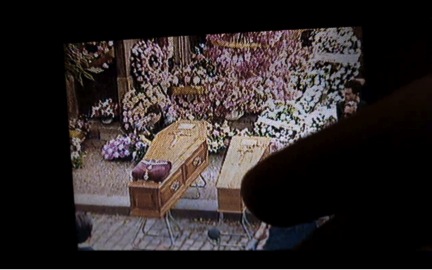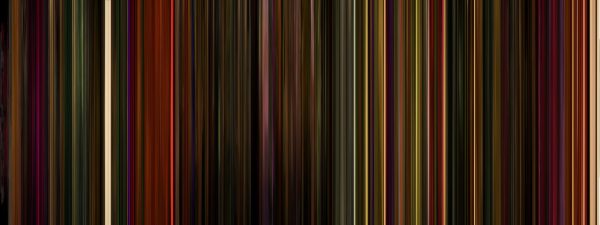‘I remember touch. Pictures came with touch.’
-Daft Punk, ‘Touch’
In the 1990s, three important pre post-reality films about identity, imitation, and grief came out: Steven Soderberg’s Sex, Lies, and Videotape (1989-1990), Abbas Kiarostami’s Close-Up (1990), and Krzysztof Kieslowski’s Blue (1993). I saw the American indie film, Sex, Lies, and Videotape and the French-Polish art house Blue as a teenager. I saw the Iranian docu-fiction, Close-Up, in 2012. All three films are definitively 90s movies to me. All three films examine the line between reality and fiction, the enactment of roles, and the place and performance of identity. Yet they are also concerned with veracity during a decade that had one last grasp on reality.
In Close-Up, Hossain Sazbain, film-lover and devoted fan of the celebrated post-revolutionary Iranian filmmaker Mohsen Makhmalbāf, assumes the identity of the director. When Sazbain’s ‘scam’ is discovered, he is put on trial for identity fraudulence. A true story, Close-Up consists not simply of reenactment or accurate portrayal, but the representation and staging of truth in/as cinema. In the film, the fourth wall is cracked open, so that reality and fiction, on-screen and off-screen, are spun from all directions, creating a seamless, interconnected effect that forecasts the digital age, where screens and performances run on continuous loop and no one is really anyone off-camera.
For Sazbain everything is in a name. Appellation alone produces identity and political freedom. Like the beloved American idiot (an early incarnation of Forrest Gump) ‘Chance the Gardener’, who is mistaken for the upper class ‘Chauncey Gardiner’ in Hal Ashby’s American satire Being There, being does not require actually (real) being. Sazbain’s being resides in the appropriation of a name that certifies cultural esteem and artistic invention. Assuming someone else’s identity provides him with a role in life and an escape from a repressive political system. However, Sazbain does not try to impersonate Makhmalbāf in any literal way, for he’s never actually seen or met him. Instead Makhmalbāf simply enables Sazbain to be an ideal version of himself. Close-Up refers to proximity and vantage point, the place from which you see others and others see you. Yet, the film is also concerned with whether propinquity has anything to do with reality, legitimacy, and truth. Does it matter what we know or if we know? Does truth have any real or locatable value in a world of forgeries and spectacle? Do we need to be anything but dissimulators and performers in the twenty-first century? New millennium, identify-shifting movies like Catfish, I’m Still Here, and Kiarostami’s later Certified Copy, tell us no. All stories matter, and are both truth and false. True/false.
Even though in the 1990s, who we really were still mattered, categories such as reality and fiction were already in the process of collapse both in the East and West. In one scene in Close-Up, Sazbian tells Kiarostami, who makes a brief (real) appearance in front of the camera at the jailhouse where Sazbain is awaiting trial, ‘What I did looks like fraud from the outside.’ When Kiarostami asks Sazbain, ‘What is it really?’ Sazbain replies, ‘I’m interested in art and fiction,’ suggesting that there is no conclusive difference between truth and fiction when it comes to perception. For Sazbain, a true male melancholic like Graham in Sex, Lies, and Videotape, if you believe in and incorporate fiction as truth it turns real. Sazbain even tells Kiarostami that Makhmalbāf’s film (fiction) The Cyclist ‘is part of him’. Later, when he informs Kiarostami that he is too ashamed to be in the film on the first day of shooting, Kiarostami replies, ‘No, you didn’t lie. You told a truth that’s beyond reality.’ And that is the world we seem to be living in today—a world whose realities are beyond truth.
At the twentieth anniversary of Sex, Lies, and Videotape at Sundance, Steven Soderbergh describes his film as ‘dated’ because of the way it speaks to time—to a time that no longer exists. Sex, Lies, and Videotape is also interested in the difference between the recorded image and lived experience as it relates to sexuality. Video, as the infamous TV court trials and crime footage of the late 80s and 90s demonstrated, is introduced as a new epistemology of verification, spectacle, testimony, and justice. So is it bad for a work of art to tell time or show its age? To be caught in (its) time, both personally and culturally? While the camera and tape recorder are instruments of creative and personal validation in Close-Up and Sex, Lies, and Videotape, the video camera is ultimately simply a means to an end. It doesn’t take the place of the thing—desires, traumas—it records it.
In Sex, Lies, and Videotape, John and Cynthia’s (Ann’s husband and sister) affair is an important counter narrative to Graham’s history of pathological lying, the result of which is genital and spiritual impotence and malaise. A recurring theme in 90s cinema, Sex, Lies, and Videotape equates dishonesty and fatigue with white male heterosexuality, making John and Graham male doubles of each other. While John shamelessly lies and cheats about everything, Graham tries to painstakingly reconstruct his masculinity by retreating into solitude and sex tapes. But when Graham meets Ann, it forces him to interrogate his ambivalent desires in a new way. Ann and Graham engage in a series of candid and often painful conversations that turns them into intimates; an intimacy that cannot be taped, screened, or fetishised.
In the movie’s remarkable denouement, Ann and Graham lie down together on Graham’s couch where they begin to touch each other’s faces as though they were blind. Before we can see what happens, the camera is turned off. The absence of this final footage (sex scene?) is deliberate and important. Real intimacy, the film says, cannot be staged or verified by a camera. In the preceding moments leading up to this scene, Ann gets ready (literally prepares herself by crossing her hands over her chest) to touch Graham, as Graham gets ready (yearns for) to be touched. It is a mutually restorative moment for both. Ann’s hands do something to Graham. He thaws at her touch—his eyes close, his body loosens. The anticipation and need for real (not just its simulated or recorded image) touch in the material world is startlingly palpable and is itself a 90s vestige of the loss of the material. (‘Touch. I remember touch. Touch, sweet touch. You’ve given me too much to feel. Touch, you’ve almost convinced me I’m real,’ Daft Punk sing in their latest album, Random Access Memories).
As Kiarostami put it in an interview about Close-Up, ‘suppressing the sound and sometimes even the image can lead to new experiences for us in cinema’. If we apply this statement to today’s image-clogged, heavily documented world, we could say that withholding the sound, and sometimes even the image of the image (the titular video images within Sex, Lies and Videotape), could return us to embodied experiences and radical engagement, both sexual and emotional. Sex, Lies, and Videotape can easily be categorized as a white male recovery film (see also The Prince of Tides and Fisher King (1991), and Fearless, (1993), which is concerned with the matrix of self-reformation, male sexuality, and love. While we never see what actually happens between Ann and Graham, John and Cynthia’s sexual rendezvous always appear on camera. Sex and lies, the movie seems to be saying, is easy to watch and lends itself easily to reproduction. In one early scene, while John and Cynthia have steamy sex, Ann and Graham sit at a restaurant and talk awkwardly about sex—specifically Graham’s inability to get an erection.
In his review of Sex, Lies, and Videotape, the late Roger Ebert wrote: ‘…there are moments when it reminds us of how sexy the movies used to be, back in the days when speech was an erogenous zone.’ James Spader’s ultra-sensory acting as a whole has been about the erotic quality of speech. In particular, his hypnotic voice and peculiar phrasing. You can literally feel it whenever Spader is on camera. What I like about Spader in Sex, Lies, and Videotape, as well as his other early films, is his willingness to be looked at in a vulnerable, erotic way—by Ann, by the camera, by the viewer. For a male actor to do this outside of the context and barrier of action (post-80s male hard body action) remains rare to this day. Thus, part of what makes Sex, Lies, and Videotape a sexy film is all the close—or what Soderbergh calls ‘quiet’—talking in it.
Like Graham in Sex, Lies, and Videotape, Julie in Blue (coincidentally, another blue masterpiece about grief, death, and artistic vision, Derek Jarman’s Blue, was also released in 1993) exiles herself in order to reinvent a life in crisis. And just as Sex, Lies, and Videotape is one of the great films about male melancholy, Blue is one of the great films about a woman in mourning. Retreat is both literal and figurative in Blue. The colour blue itself is literal and figurative. Things are actually blue, like the bruises Julie sustains on her face and body after surviving the car wreck that killed her husband and daughter. Like the blue glass that hangs in her new Paris apartment and the blue swimming pool she swims in at night by herself. Blue is the color of the marker Julie uses to write her husband’s final concerto, literally making them blue notes. Solitary rituals are symbolic acts of blueness when one is in mourning, just as the video image, especially when it crashes and goes static, is blue, turning video into a technological effect/affect of mourning and melancholia.
What I love about Blue, and what I loved about it when I first saw it as a moody, bookish 19-year-old in the middle of an intense love affair is its contribution to the representation and aporia of female solitude, grief, and genius—something that is still sorely missing from the canon of cinema. Like Ann’s husband in Sex, Lies, and Videotape, Julie’s husband, we discover, was also having an affair. Moreover, Julie, the widow of a famed French classical composer, is suspected to have been secretly writing her husband’s music all along. After his death, she is haunted by the unfinished concerto—’for the unification of Europe’—he (she?) was working on before he died. Because Julie is a woman who, at least publicly, chose marriage and motherhood over her own artistic brilliance, mourning, memory, and survivor guilt take on multiple registers in the film. And, like in Close-Up, memory, mourning, and identity are both personal and political in Blue.
The 90s is full of movies about people who leave. Who take off. Who do not want to be found. Who can’t hack it. Who break down. Graham only wants to have ‘one key’. Julie sells her lavish country estate and walks away from her life with only a small box. The only thing she takes with her to Paris is one item she has asked her gardener to take from the ‘blue room’ (her daughter’s, presumably), ’emptying’ her life the way she has been emptied by grief. Sabzian takes refuge in someone else’s identity and artistic originality (originality being a recurring trope in Kiarostami’s work) in order to live a life that has become unbearable for him in a country in political turmoil. Strangely, all three films begin on the road, in cars. Even stranger, both Sex, Lies, and Videotape and Blue open with the camera tracking the asphalt of the road, hitting rock bottom from the start. In Blue the road is tinted blue even before the car wreck occurs. Blue is both the loss that is coming and the loss that is already there, inscribed in everything a priori. At 19 and 21, I thought Julie was so much sadder than I do today, having now been through my own adult losses and sadnesses. Back then I did not fully recognize Julie’s deep appreciation for life in the face of devastation. Small joys and passions are everywhere in the film despite its tangible grief and self-imposed exiles. Maybe, happier or more hopeful then, I expected more from happiness. Watching Blue today, Julie seems more buoyant perhaps because I am heavier.
As Sex, Lies, and Videotape demonstrates movingly in its pivotal scene, in the 90s the camera was still used to look at human faces—and lives—for some kind of register of veracity and emotional authenticity. All three films treat the face as a front that leads inward. Today everyone looks to the camera itself for a meaning that goes from one meta-surface to another. Mediation and representation comprise the totality of meaning and experience. But Close-Up, Sex, Lies, and Videotape, and Blue all acknowledge the aporia—the limits—of the image, where the image hits a wall epistemologically and we can no longer bear to look or see or record. And while the line between reality and representation is constantly being blurred and crossed in all three films, there is still a line. There are some pleasures and sorrows we simply don’t see and aren’t shown. That are embodied, with us rather than outside of us: A naked Graham trying to get off, instead looks away, crying, while Cynthia’s video confession about her affair with her sister’s husband plays on screen.
Julie trembles in her hospital bed at the sight of her daughter’s tiny coffin on TV, her face—like Maria Falconetti’s great visage of suffering and revelation—dwarfing the screen in her hand.
So how do we disappear today? We need to disable multiple online accounts to lose ourselves, and others. We leave behind algorithmic traces we can’t even see, accumulating rather than erasing data and ties. Apps tell people where we are and social media keeps constant track of us like news ticker. In twenty-first century life, driving or walking away (‘dropping out’) would merely be symbolic. All disappearance acts are announced online, and are more often than not, just empty threats. Retreats are narrated as they happen. Everyone expects us back soon. We call our own bluff. We cry wolf. Ironically, when we are everywhere all the time, we are nowhere to be found. I like the 90s because it shows us exactly when we stopped being someone and somewhere. It’s maybe also the last time we honestly cared about being lost and found.
